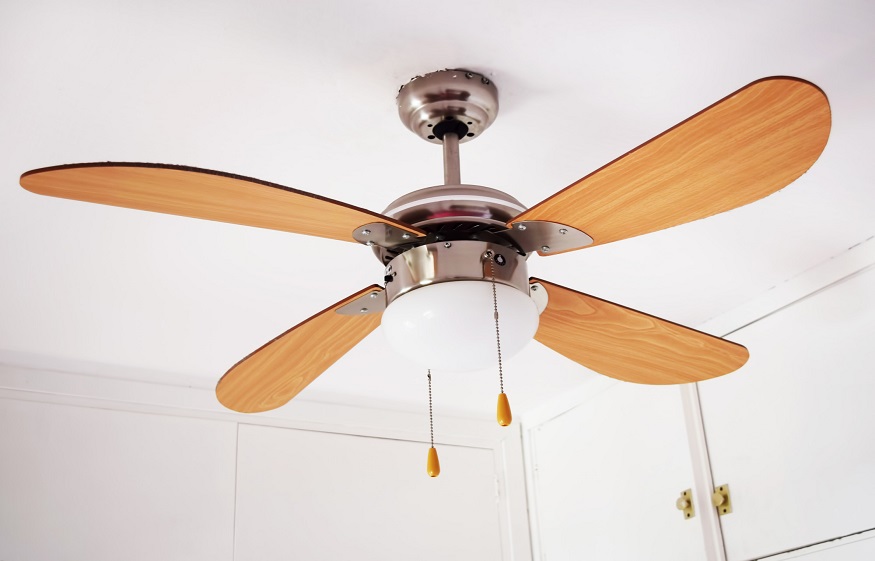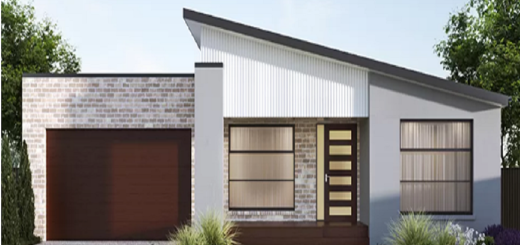How to Choose a Ceiling Fan Size
A ceiling fan can entirely change the feel and look of a room, but only if it’s the right size. And figuring that out can be quite difficult.
That’s why we wrote this article. Choosing the right fan size is more than just knowing the dimensions of your room, you also have to consider use-case, rating systems, airflow efficiency, and much more.
In this article, we will cover all of that. So that you can make an educated decision when you have to implement your new knowledge of how to choose a ceiling fan size.
Whenever you’re ready to start your journey towards cooled air and circulated airflow, keep reading.

Where Will the Fan Be Installed?
When choosing the correct ceiling fan size, location matters quite a bit. For instance, you need to know in advance if you’re going to be using residential or industrial ceiling fans.
Residential ceiling fan styles can accommodate any lifestyle. Innovative features in a broad variety of styling options, ranging from modern to traditional will help you drastically improve the design of your home.
Whereas, industrial ceiling fans are developed to reduce energy consumption and improve airflow. Low-speed, high-volume fans are really great for circulating more air than any other type of fan. If you’re looking for super-quiet efficiency and impressive fan warranties, you might need to go industrial.
Next, you should know if you’re looking for an indoor or outdoor fan.
Indoor Fan
When temperatures are greater in the summer, a ceiling fan can help you remain cool throughout the day. During the colder months, a ceiling fan will assist in distributing the heat within your some. Even though some outdoor fans can be used inside, indoor fans cannot be used outside.
Indoor fans, also known as dry-rated fans are perfect for bedrooms and living rooms. They are rated only for indoor use because they cannot withstand direct moisture or water exposure. That means they cannot be placed in laundry rooms or bathrooms either.
Outdoor Fan
When choosing a fan for the outdoors, you need to select a model that has the appropriate Electrical Testing Laboratories and Underwriters Laboratories ratings. If you don’t, technical concerns will most likely be present.
For instance, if the fan is not rated for the proper use and it becomes exposed to rain or humidity, pieces of the fan can start to rust. Thus, impacting its ability to perform.
ETL and UL ratings come in two forms, wet rated and damp rated.
How to Choose a Ceiling Fan Size?
For optimized efficiency, you need to select the best possible ceiling fan size for each of the rooms you plan on using them in. Installing a fan that’s too large for your room can easily overpower the space, even at the lowest setting. On the other hand, installing a fan that’s too small will not be able to circulate the airflow properly.
The diameter is used to determine the amount of air that can be circulated by the ceiling fan. Larger rooms need fans with greater diameters, whereas a smaller space needs a fan with a smaller diameter.
For instance, if your room is 100 square feet or less, you will need a small ceiling fan. You should get one that has a diameter of 30 to 48 inches. These are great for laundry rooms and home offices.
For rooms that are 400 square feet or less, you will need to find a fan that ranges from 48 to 54 inches. These types of fan sizes are perfect for bedrooms, living rooms, and kitchens.
For rooms that are over 400 square feet, you can start with larger fans that begin at 56 inches in diameter. Larger ceiling fans are great for open-concept lofts or living spaces.
Follow these guidelines, and you have learned how to choose a ceiling fan size that’s right for you. As you can size does matter. However, there are some other things worth considering as well.
Which Mount-Type Is Best for You?
Different fans have different mount types. Low-profile or flush mounts are used in rooms with ceiling heights of about 8 feet high. These low-profile mounts are developed to help install ceiling fans flush with the surface so that the blades hang safely overhead.
Standard ceiling fan mounts are developed for rooms that have a height of 9 feet or more. The use of a downrod during installation is crucial to properly adjust the hanging height of 9 or 8 feet from the floor.
If your ceiling height is more than 10 feet, fans might have to be installed without an extended downrod. If your ceilings are vaulted or sloped for more than 34 degrees, you will need an adapter kit to ensure proper installation. These adapters replace the fan canopy that usually comes with most fans.
What Airflow Do You Need?
Another thing to consider when choosing the right ceiling fan for your space is how energy-efficient it will be. Energy-efficient fans can help you keep warm during the winter and cooler in the summer.
Since a fan can help make your room feel 8 degrees cooler in the summer, your AC will not need to have to work as hard. In the winter, by running the fan on low speed clockwise, warm air will be circulated across your home by being pushed down.
With precision blades and optimized motors, specialized fans will produce an appropriate air velocity while remaining wobble-free and whisper-quiet. The aerodynamic and contoured design of the blades will assist in creating a uniform flow of air. This means that you will experience the best of high-speed cooling throughout your entire space.
When looking for an energy-efficient, you should look for Cubic Feet per Minute, which refers to the measurement of how much air can be moved by the fan. More energy-efficient fans can produce greater airflow by consuming less energy. Look for fans with larger CFM ratings because they will have the best custom-engineered angles and motors.
Your Fan, Your Choice
Now that you know how to choose a ceiling fan size, you can finally start to look for that special fan of yours. As long as you consider all of the important aspects of the search, there is no reason that you will not find the fan that’s perfect for you.
If you’re interested in learning more about home interior design and architecture, check out some of the recommended articles on the sidebar.














